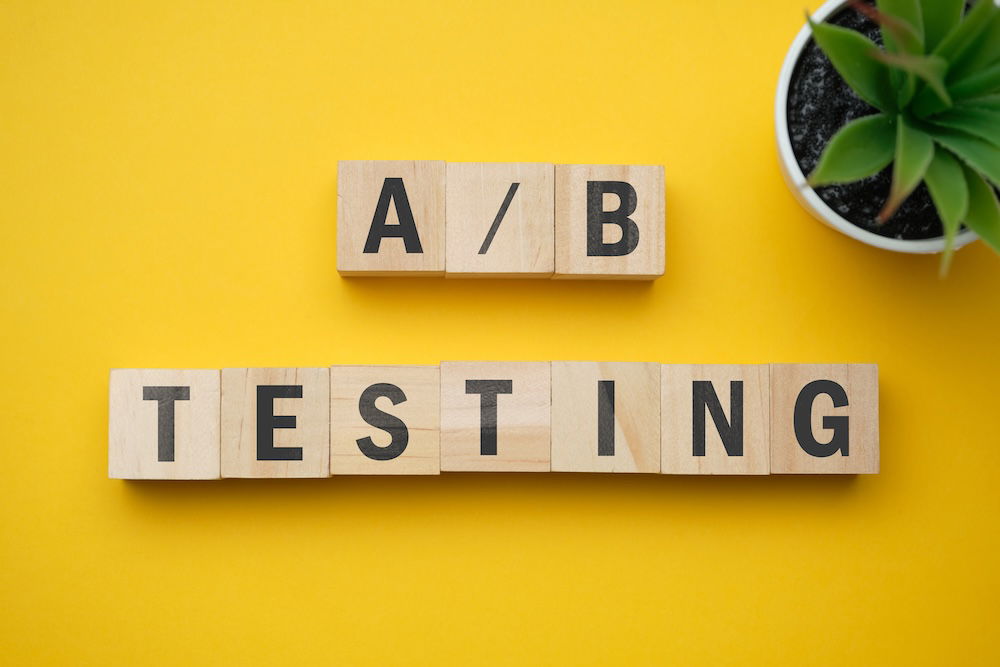Conversion Rate Optimisation is a huge aspect of marketing that often gets overlooked.
So many business owners are focused on driving users to their websites from organic search, social, and paid ads, but they don’t pay enough attention to what these users are actually doing on their websites and, most importantly, whether they’re converting into leads or customers.
That’s where Conversion Rate Optimisation comes in.
It’s your secret weapon that you can use to turn your website into a lead/sales-generating machine through user behaviour insights and website optimisation.
In this article, I’ve delved into what Conversation Rate Optimisation is, how it differs from strategies like SEO, and how you can use it to improve your website performance, increase your profits, and hit your business growth goals.
What is Conversion Rate Optimisation?
In simple terms, Conversion Rate Optimisation (aka CRO) is the process of making tweaks and changes to your website or marketing strategies to increase the percentage of visitors who go on to buy one of your products, sign up for your newsletter, submit a contact form, or any other conversion action that you want them to complete.
Conversion Rate Optimisation gives you a huge opportunity to get more leads and sales, and increase your revenue and profits. But 68% of businesses still don’t have a CRO strategy in place!
CRO is pretty expansive, and there are a load of different tactics and techniques involved that can differ depending on whether you’re optimising your website or your marketing strategies.
Before we get onto those tactics, though, I want to take a second to highlight just how important Conversion Rate Optimisation is and why you need to implement it.
Why is Conversion Rate Optimisation important?
Some people only look into CRO when their results have dropped and are desperately scrambling to find a solution. But you shouldn’t just look into improving your conversion rate when you feel like you’re in a bit of trouble.
Conversion Rate Optimisation helps you get the most out of your website and marketing strategy, and it’s essential if you’re looking to make your business more profitable.

Think of it like having a physical store. You’ve got loads of people coming in to browse around, but many of them leave without buying anything.
So, you do a bit of thinking, and you rearrange your store to make it more visually appealing. You get some more eye-catching and persuasive discount/sale signs, and you move some products right next to the till, so your customers are more likely to pick them up as an ‘impulse buy’.
CRO is like the website/digital marketing equivalent. You’re trying to get more website visitors to buy from you or other actions you want them to complete by rearranging/changing visual elements, improving written content, and other changes.
In a nutshell, you’re making low-cost and often simple changes that can have a big impact on your conversion rate, and therefore, you can generate more revenue and profit.
What is the difference between CRO and SEO?
Sometimes, there’s a bit of confusion about the difference between Conversion Rate Optimisation (CRO) and Search Engine Optimisation (SEO).
It’s easy to see why.
They’re both shortened to three-letter acronyms, mention ‘optimisation’, and both involve making on-page optimisations to websites to improve types of user engagement.
But really, that’s where the similarities end.
Here’s a breakdown of the two optimisation strategies, their goals, methods, typical timeframes, and results to clear things up.
SEO (Search Engine Optimisation)
- Goals: Search Engine Optimisation is all about making your website more visible on Google and other search engines. The main goal is to generate more organic traffic to your website by improving your ranking position for keywords related to your business and your ideal customers and using optimised metadata to encourage clicks through to your website.
- Methods: Typical SEO techniques include keyword analysis and optimisation, creating high-quality keyword-rich content, building backlinks on relevant, authoritative external websites, and measuring and optimising technical performance like site speed and other Core Web Vitals that Google uses to judge website quality.
- Timeframe: SEO is a long-term strategy that has to be continuously worked on and nurtured. SEO results can take anywhere from a few weeks to several months to materialise, depending on how much work is required, the industry you’re targeting, the keywords you want to rank for, and how much competition you have (and how hot they are on their SEO).
- Results: If your SEO strategy is successful, you should notice an increase in organic traffic and website engagement rates from organic users. You should also be able to track increases in your ranking positions for your keywords and, as a result, an increase in organic search visibility.
CRO (Conversion Rate Optimisation)
- Goals: With Conversion Rate Optimisation, the goal is to increase the percentage of users who take a specific action on your website, like buying something from your online store, signing up to receive your newsletter, or filling out a contact form.
- Methods: The methods involved in CRO are different to SEO, focusing on things like A/B testing, improving website design, enhancing User Experience (UX), and refining calls-to-action to encourage more user conversions.
- Timeframe: The results from CRO are typically much quicker than SEO, and changes can directly impact your conversion within hours if you have a lot of traffic going to your website.
- Results: If you implement a successful Conversion Rate Optimisation strategy, you’ll notice an increase in conversion actions on your website, which often leads to increased revenue and profit.
How to optimise your conversion rate
Creating goals that align with your business
Before you make any changes to your website or marketing campaigns, you should set clear goals for your Conversion Rate Optimisation strategy that align with your overarching business goals.
Let’s say your business goals for the next five years are to:
- Grow the business through strategic hiring
- Increase profits by 200%
- Focus on increasing customer retention – with a target of 85%
If these are the most important goals you want to reach, then you’ll need to plan and prioritise CRO actions to help you get there.
There’s no point focusing on getting more sign-ups for your newsletter if it’s not that much of a priority for your business – it’ll just be wasted time and effort.
Instead, for these goals I’ve listed above, you’d want to focus on things like:
- Optimising content and CTAs on your careers and job pages
- Streamlining your checkout process to limit cart abandonment
- Focusing on the benefits in your product copy and using urgency tactics
- Setting realistic expectations in your content and not overselling what you do to avoid customers feeling deceived and disappointed
Prioritising these actions could help attract more job applications from the right people, increase sales across the website, and positively impact customer retention rates by being realistic and honest in your website copy.
Setting clear and relevant goals from the start is so important because it will help you identify the actions you’ll need to prioritise to get the most from your CRO strategy and reach your business goals.
Conducting research and data analysis
Understanding how your website or marketing campaigns perform right now is an essential step in planning your Conversion Rate Optimisation strategy.
Start by looking at the data you’ve got available.
For analysing your website data, you should look at things like:
- Website traffic: Check Google Analytics to understand how many people visit your website and where they come from (organic search, paid search, social media, direct traffic).
- User behaviour: What people do on your website, what pages they visit, and how long they stay for.
- Conversion funnel data: The steps users take before they convert and where drop-offs occur during this process.
- Page performance: Look at the performance of individual pages on your website, looking at metrics like engagement rate, page loading times, avg. session duration, and exit rates.
For your marketing data, you should be looking at things like:
- Lead data: How many leads are being generated, the quality of those leads, and which channels bring in the most leads.
- Ad performance: Look at the effectiveness of your ads by analysing click-through rates (CTR), cost per click (CPC), conversion rate (CVR) and return on ad spend (ROAS).
- Email campaign performance: Analysing open rates, click-through rates, reply rates, and conversion rates.
- Content marketing performance: How well your content attracts visitors to your website, how long these visitors stay for, and the other pages they visit.
- Customer journey data: Understanding your customer touchpoints and the interactions your customers have with your brand before converting. This will help you optimise their experience at each stage.
Carrying out this research and analysis of your website and marketing data will help you identify where drop-offs are happening in your customers’ journeys and the pages of websites or marketing channels that need to be improved.

You should also look at carrying out a UX audit at this stage in your planning to find any user experience issues, snags, or roadblocks that are often difficult to see at the surface level but can seriously affect your conversion rate.
This part of the process can be pretty complex, so if you need a hand, we can carry out a full UX audit that covers things like user journey mapping and testing, heatmap and clickmap audits, competitor benchmarking, and a load of other tests.
A/B Testing
A/B testing is one of the most important steps of any Conversion Rate Optimisation strategy. It involves creating two or more versions of a landing page, email campaign, or ad and running them simultaneously to different groups within your audience.
You then analyse the performance of each page, email, or ad and see which one performed better in terms of conversions.
For example, if Landing Page #2 saw 35% and 50% more conversions than Landing Pages #2 or #3, respectively, then you know that whatever changes were made to that page had a more positive impact than the changes made to the other two.
With that info gathered, you’d then know to drive traffic from your email and ad campaigns to Landing Page #2 to get more conversions.

This works the same way with things like emails or ad campaigns.
You can create a few ad variations with different creatives (imagery), copy, or extensions to test which ad generates the most clicks and conversions. With your emails, you can segment your recipient list and send different versions of an email with tweaked subject lines, personalisation fields, or calls to action and see which performs best.
One thing to note – don’t make your variations too different from each other.
Instead, conduct multiple rounds of A/B testing where you change one or two elements at a time. This is so you can get a clear picture of what drives your users to action and what tweaks and optimisations are actually working to improve your conversion rate.
Improving calls to actions
One of the biggest causes of users not converting is weak or confusing calls to action.
So it’s not a surprise that optimising call-to-action buttons, links, and copy is a big part of improving the conversion rates on your website, your ad campaigns and more.
Here are a few examples of the kind of changes that are typically made to calls to action to improve conversion rates:
- Making CTAs noticeable: Ensuring that buttons and links stand out using eye-catching colours, enlarged text, and putting them next to the text/sections that they’re related to.
- Using persuasive text: Avoiding generic CTA text like ‘Click here’ and using phrases like “Claim your free trial”, “Get started”, or “Sign up for free”.
- Creating a sense of urgency: Using a sense of urgency to encourage users to take action, e.g. “Limited Time Offer!”, “Only 3 Left In Stock!”, “Sale Ends Tomorrow”.
- Highlighting the benefits: Focus on the benefits instead of the action. E.g. instead of “Download Our Finance App Now!” you could use “Start Saving Money Today!”
- Using first-person language: Using words like “My”, “Me”, or “I” can make visitors feel like that action is tailored to them. E.g. “Add to my basket”
- Position on the page: Positioning CTAs higher on the page so that they’re seen straight away instead of users having to scroll right to the bottom.
Optimising your content and copy
It’s not just CTAs that influence your conversion rate; it’s the copy and content that guides visitors to your CTAs, too.
The job of your ad copy or website content is to capture your audience’s attention, tell them about what you do and what you’re offering, and then guide them towards the relevant call to action.
If your ad copy or content is generic, unhelpful, or just plain boring, then why will your users want to make an enquiry, buy something from you, or sign up for your newsletter?
Optimising your content and copy to sound more human, highlighting the benefits of what you’re offering, and focusing on what matters to your audience can go a long way towards improving your conversion rate.
Using quality images of your own people
It might seem simple or arbitrary, but even things like the images you use on your website have a big impact on your conversion rate optimisation results.
If you’re using cheap and tacky stock images or the same templated visuals/graphics that everyone does, it can affect your conversion rate and the perception of trust and quality that your users have when browsing your website.
I mean, just look at this one…

The bloke on the left is in loads of generic office-related stock images across the internet.
I’m sure he’s a nice guy and looks very happy here, but unless he works within your business or the photo was taken in your office, he’s got no reason to be on your website.
Instead, try using professional-looking photos of your team, office, and products.
You’ll notice that across our website, we always use photos of our own people and only ever use stock images for our blog posts to help illustrate our points.
And before you say, “Oh, but I’m not that good at photography!” … neither am I.
I took this photo of our Commercial Manager, Adam Tiley, sitting in our office boardroom with a pretty standard Canon camera, and the photos of our Specialists on our About page were all taken on an iPhone. Anyone can do it!

User journey mapping and optimisation
Mapping out the journey your users take on your website with the aim of improving friction points can help massively boost your conversion rate.
User journey mapping is a bit like drawing a map of the path your visitors typically take from their first visit through to conversion.
Mapping this out helps you understand where people get stuck or frustrated and where user drop-offs often occur.
You can then create a plan for improving your user journey and removing roadblocks and friction points to help them move smoothly from one step to the next.
For example, you might simplify the checkout process, improve the flow of your website through structural or design changes, and place clear calls to action at the right time.
Tracking the right KPIs
Depending on the goals you’re trying to reach with your Conversion Rate Optimisation strategy or digital marketing, you’ll need to look at different KPIs (key performance indicators).
Obviously, the biggest indicator that your CRO strategy is working is if your conversion rate goes up.
But when you’re making minor changes to your website or ad campaigns, it won’t always impact your conversion rate straight away.
So, to know whether you’re on the right track, you need to look closely at other important bits of data related to the changes you’re making.
When making changes to your website, you’ll want to track things like:
- User engagement rate
- Average session duration
- Exit rate (and the page people are exiting on)
- Cart abandonment rate
- Page loading times
If you’re making changes to your marketing campaigns, like Google Ads, you’d need to look at:
- Click-through rate (CTR)
- Ad impressions
- Quality score
- Ad position
- Cost per acquisition (CPA)
Properly tracking and monitoring these KPIs will help you understand whether the changes you’re making are having a positive impact and if you’re on the right track for improving your conversion rate.
Extra tips for nailing your Conversion Rate Optimisation strategy
Make great customer service easily accessible
CRO isn’t all about making content or technical changes to your site.
Even simple things like making it easy for visitors to ask you questions and submit enquiries can help.
Using live chats on your website lets visitors quickly reach out to you and ask questions about your products/services.
If you make that process easy for them (avoiding poorly set up chatbots that cause frustration) and you respond quickly and helpfully to their questions, it can nudge them towards buying from you.
The same goes for your contact forms.
I’m sure you’ve come across this problem before…
You just want to ask a business simple questions about what they do or what they offer, but the only way to get in touch with them is through a ridiculously long contact form that asks you for completely irrelevant information.
If all you’re trying to do is ask them a question, you don’t want to be handing over things like your address, date of birth, or anything else that isn’t relevant… and neither will your users!
Simplifying your forms and only collecting the information you need will make getting in touch much easier for users.
Focus on building trust through reviews and partnerships
Trust plays a big role in generating leads and sales.
The trouble is that a lot of companies think building trust means slapping all the “awards” they’ve won across their website so that their visitors see them as successful and authoritative businesses in their industry.
But the vast majority of the time, the companies pay for these awards or nominate themselves for a stupidly specific category wherein they’re the only nominee… usually something like “Best Family-Run Undertakers Within a Director Called Tony.”.
Your customers aren’t stupid; they can smell fake and pointless awards from a mile off.
If you want to build trust with your audience, focus on other kinds of social proof that can’t be bought but have to be earned.
Things like genuine customer reviews, Trustpilot scores, and partnerships with respected companies within your industry.
Take our website as an example…
On our homepage, we display the overall 5/5 rating that we’ve received from over 200 client reviews on Google, Bark, Trustpilot and similar sites, and we also showcase our Google Premier Partner, Microsoft Advertising Partner, Semrush Agency Partner, and other similar badges that all show we’re an experienced and reliable agency.

Implement a retargeting strategy
If you don’t have a strategy for re-engaging with website visitors who left without converting, you’re missing out on a load of potential leads and sales!
When people leave your website without buying anything, it’s not always because there are glaring issues with your website. People often get busy and forget to check out, or they need time to think about it.
That’s why retargeting is so important. It’s a way of tracking and reaching out to these people to give them a nudge and say, “Hey, don’t forget about this thing you were looking at buying!”
Sometimes, a reminder alone is enough to increase your conversion rates, but if your customers aren’t too sure about the price of what you’re offering, reaching out to them with an offer like a 10% discount can help push them in the right direction.
If you approach retargeting in the right way and aren’t too pushy with your messaging, then it can work wonders for your CRO strategy.
There are multiple ways you can include retargeting into your strategy; here’s just one of them:
- Implement tracking pixels on your website: This is a piece of HTML code that will allow you to track user behaviour and conversions. A tracking pixel can collect data for retargeting campaigns, like users who visited specific pages on your website and then left and users who started adding products to their cart but didn’t complete the checkout process.
- Email retargeting campaigns: If the users who abandoned their carts were signed into your website or previously provided their email address, you can use the pixel data to set up automated retargeting emails to remind them to complete their order or offer them a discount. (as long as they’ve consented to marketing emails).
- Retargeting ads: You can also connect some tracking pixels to ad platforms like Google Ads and Facebook Ads. This allows you to create retargeting campaigns and show them to people who have visited your website recently but didn’t complete a conversion action.
Regularly review your website and marketing data
This final tip is a very simple one.
Just keep reviewing your website and marketing data, and always look for ways to improve the experience you deliver to your ideal customers.
Customer needs and behaviours are evolving all the time, and so are the tools and platforms for engaging with your customers.
Keep an eye on your performance data, customer behaviour data, and changes in your industry will help you stay on top of things and maintain your conversion rate.




